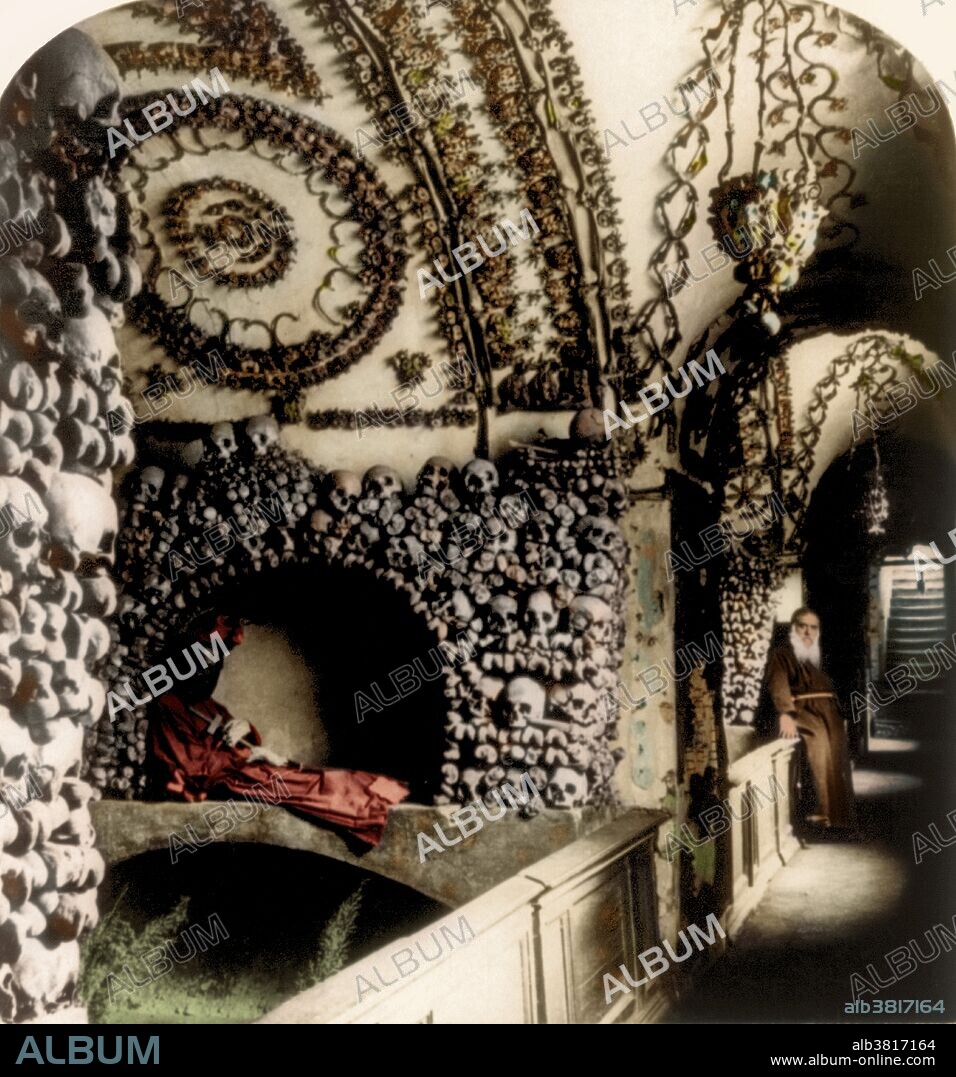alb3817164
Capuchin Catacombs, 1897

|
Add to another lightbox |
|
Add to another lightbox |



Title:
Capuchin Catacombs, 1897
Caption:
Stereograph shows corridor in the Cappuccini Catacombs, Rome, Italy, 1897. The Capuchin Crypt is a small space comprising several tiny chapels located beneath the church of Santa Maria della Concezione dei Cappuccini on the Via Veneto near Piazza Barberini in Rome, Italy. It contains the skeletal remains of 3,700 bodies believed to be Capuchin friars buried by their order. The Catholic order insists that the display is not meant to be macabre, but a silent reminder of the swift passage of life on Earth and our own mortality. When the monks arrived at the church in 1631, moving from the old monastery, they brought 300 cartloads of deceased friars. Fr. Michael of Bergamo oversaw the arrangement of the bones in the burial crypt. The soil in the crypt was brought from Jerusalem, by order of Pope Urban VIII. As monks died during the lifetime of the crypt, the longest-buried monk was exhumed to make room for the newly-deceased who was buried without a coffin, and the newly-reclaimed bones were added to the decorative motifs. This image has been color enhanced.
Credit:
Album / Science Source / Library of Congress
Releases:
Model: No - Property: No
Rights questions?
Rights questions?
Image size:
4200 x 4501 px | 54.1 MB
Print size:
35.6 x 38.1 cm | 14.0 x 15.0 in (300 dpi)
Keywords:
1890S • 1897 • 19TH CENTURY • BONES • BURIAL CRYPT • CAPPUCCINI CATACOMBS • CAPUCHIN CATACOMBS • CAPUCHIN CRYPT • CAPUCHIN ORDER • CATACOMB • CATACOMBE DEI CAPPUCCINI • CATACOMBS OF THE CAPUCHINS • CATACOMBS • CATHOLIC • CATHOLICISM • CELEBRITY • CEMETERY • CHRISTIAN • CHRISTIANISM • CHRISTIANITY • COLORIZED • CRISTIANDAD • CRISTIANISMO • CROPPED • DECORATIVE MOTIFS • ENHANCEMENT • EUROPE • FAMOUS • HALLOWEEN • HISTORIC • HISTORICAL • HISTORY • HUMAN BONES • HUMAN REMAINS • IMPORTANT • ITALIA • ITALY • MACABRE • MONKS, CAPUCHIN • NOTABLE • ORDER, CAPUCHIN • PHOTO • PHOTOGRAPH • RELIGION • RELIGIOUS • REMAINS (SKELETON) • ROMAN CATHOLIC • ROME • SIEGE • SITE • SKELETONS • SKULLS • STEREOGRAPH CARD • STEREOGRAPH • WELL-KNOWN
 Pinterest
Pinterest Twitter
Twitter Facebook
Facebook Copy link
Copy link Email
Email

